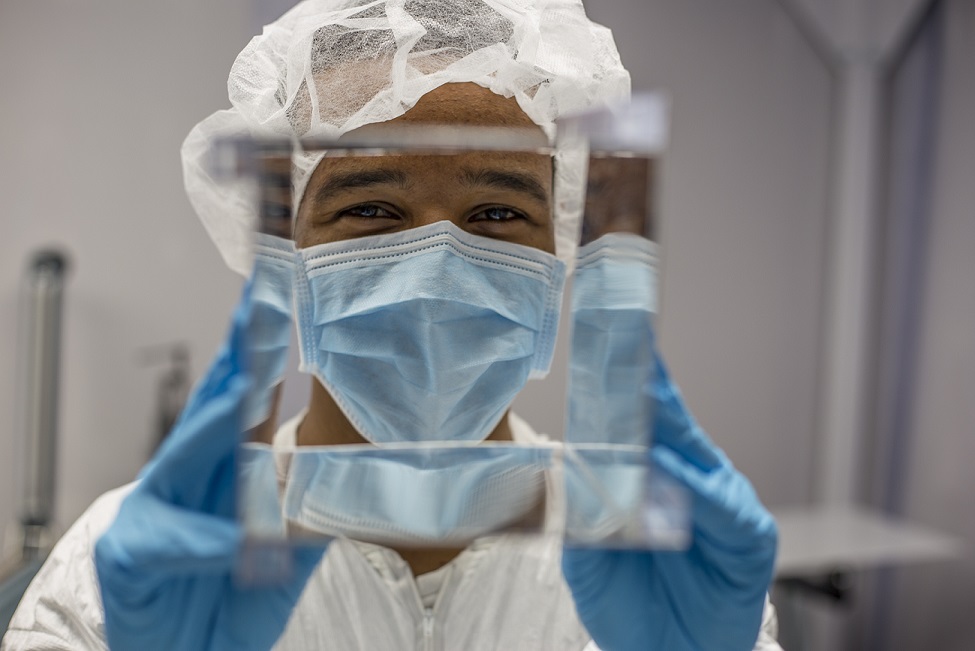Yonas Gebre, fourth-year physics and applied math major, has loved math from an early age and started college with the intention of becoming a mathematician. After taking a few math courses his first year, he started to become interested in how math was used to describe the world around him, and this interest is what eventually led him to physics. “As a physics student, I was introduced to a world of theorems and models that described the universe from a scale of subatomic particles to clusters of galaxies. The continuous search for new particles and new theories to describe them is what makes physics research really exciting to me,” said Gebre.
Since fall 2016, Gebre has been part of the neutrino physics research group of Bryce Littlejohn, assistant professor of physics, and Chris White, vice provost for academic affairs and professor of physics. The research group is part of the Precision Oscillation and Spectrum Experiment (PROSPECT), the $4 million Department of Energy-funded effort to construct a detector that can be used very close to the core of a nuclear reactor to try and prove or disprove the existence of the elusive sterile neutrino.
Over the course of his time in the lab, Gebre has made himself an indispensable part of the group’s laboratory work designing and producing PROSPECT’s target segmentation subsystem. The group’s two graduate students spent most of their time determining the design of this system and producing the parts for it, but did not have the time to determine if each of the produced parts met their many experimental requirements, so Gebre took over the leadership role of quality assurance of these parts.
Gebre also developed an analysis program that uses results from multiple reactor neutrino experiments to determine the neutrino flux contribution from each fuel component isotope. Fuel components change with time as a reactor operates. Neutrinos are produced when these isotopes undergo fission and split into two smaller atoms. The number of neutrinos produced by fission of each isotope is different, and by comparing results from experiments with varying fuel composition, the contribution made by each isotope can be determined.
“Despite his relative unfamiliarity with neutrino physics, Gebre dove headfirst into the analysis, and made a completely unexpected amount of progress in his first few months of work,” according to Littlejohn.
This summer, Gebre was chosen as one of the College of Science Undergraduate Summer Research Stipend winners. With his stipend, he continued his work with Littlejohn and White, further developing his analysis and programming skills by writing and developing programs used in studying neutrinos, building components of an antineutrino detector, and learning how to use instruments and software to measure their reflective properties.
Gebre’s goal is to obtain a Ph.D. in particle physics. “As a physicist, one gets to be part of this quest started thousands of years ago, as people tried to understand the world around them. I want to be part of this quest and hope to contribute to the vast store of knowledge we have developed so far,” he said.
He is currently a member of the Society of Physics Students and the Robotics Club, and a math and physics tutor at Illinois Tech’s Academic Resource Center. 
